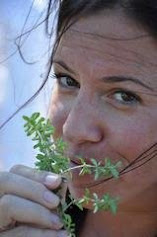I’ve received several emails from Gordon Godfrey, Director of Development at Turtle Camp at Playa Las Tortugas and here are some quick insights into my next 10 days:
- The living conditions are a bit rustic. Compare it to camping out with a few added comforts. The sleeping area is a one room dorm upstairs in the main building under a thatched roof. There is a divider to give the ladies some privacy, but it is a very communal living space. There is a separate building with bathroom and shower facilities. We have a classroom that is also used as the kitchen and dining area. There is a gas stove, refrigerator, and purified drinking water. You are responsible for your own food and cooking. We make runs 2 to 3 times a week to nearby villages for supplies
- Summer is rainy season in Mexico. You will have warm and humid days with rain storms in the afternoon and evenings. Probably the hardest adjustment is to the heat (90 F/ 32 C) and the humidity (90%). Watch the amount of sun you get the first few days and drink plenty of water. This is also mosquito season and because we are near an estuary we also have jejenes or no-see-ums. Everyone reacts differently, but it is good to have natural bug sprays (the turtles remember) and an anti-inflammatory like Benadryl and cortisone cream. There isn’t any danger of disease carried by these insects so no shots are necessary, though it has been said that vitamin B-12 reduces the reaction to the bites. Be aware that utilities (i.e., running water and electricity) are unreliable and may be temporarily lost due to weather or mechanical failure.
- Expect to work long hours most nights, even in stormy weather to search for eggs in the nests recently made by the turtles. Volunteers are expected to walk or possibly ride on the four-wheelers along the 9 km of beach trying to reach the eggs before the hueveros (egg dealers) get them.
- Volunteers should come with an open mind in order to benefit from their time in Mexico. The camp is located on one of the greatest beaches in all of Mexico. There is also a salt water estuary where you can take a relaxing swim or explore by kayak. There is a nearby beach village with numerous restaurants that cook great seafood and it’s fun to visit the local towns when buying supplies.
- The Platanitos Sea Turtle Camp is regulated and directed by Mexico’s National Commission of Protected Areas (CONANP), which is part of the Secretariat of the Environment and Natural Resources. Located on the Playa Las Tortugas property, the camp is supported by the homeowner association. The HOA provides infrastructure support as well as maintenance and capital improvements for the camp.
- Our primary goal is to increase the number of turtle nests collected each year, maintain a high rate of incubation and help replenish the sea turtle population. For the past 12 years the turtle camp has had a positive influence on the sea turtle population with the number of baby turtles increasing every year. The rate of incubation from 1995 to 2005 is 78%, a significantly higher number in comparison to natural incubation. In 2009 we collected 2,457 nests and released over 225,000 baby turtles into the wild. Our goal for 2010 is to collect over 3,000 nests for the first time and release over 300,000 hatchlings.
- Volunteers are an integral part of the success of the Platanitos Sea Turtle Camp. You will be directly involved with camp staff in patrolling the adjoining beach, collecting eggs, incubating eggs, and releasing the hatchlings back into the ocean. Other volunteer duties include the monitoring of tides, weather and moon phases, the monitoring of nests and data collection such as number recording, and comparison measurements. The work is primarily carried out at night when the sea turtles leave the ocean to lay their eggs. You will also help maintain the turtle camp so it can function more effectively and provide a comfortable atmosphere for all who are living at the camp.
- Veterinarian Miguel Angel Flores Peregrina is the director of the six turtle camps in the state of Nayarit. He visits the camp on a regular basis and is in charge of the program at the turtle camp. The lead coordinator this summer season is Biologist Hermilo Esparza Venegas. He has been the on-site director of the Platanitos Turtle Camp for the past four years and is in charge of the daily operation of the camp.
I have been told that I should have cell service in certain areas of the beach at my volunteer project; also that there will be internet service. I take all international tech promises with a grain of salt until I see all five trusty bars on my BlackBerry in action. If you don’t hear from me, it’s not because I don’t love you – it’s because the cyber gods are causing connectivity hell and havoc. I promise to blog and post pictures as soon as possible. I don’t want to keep all the sea turtle conservation super nerdy science stuff to myself.






No comments:
Post a Comment